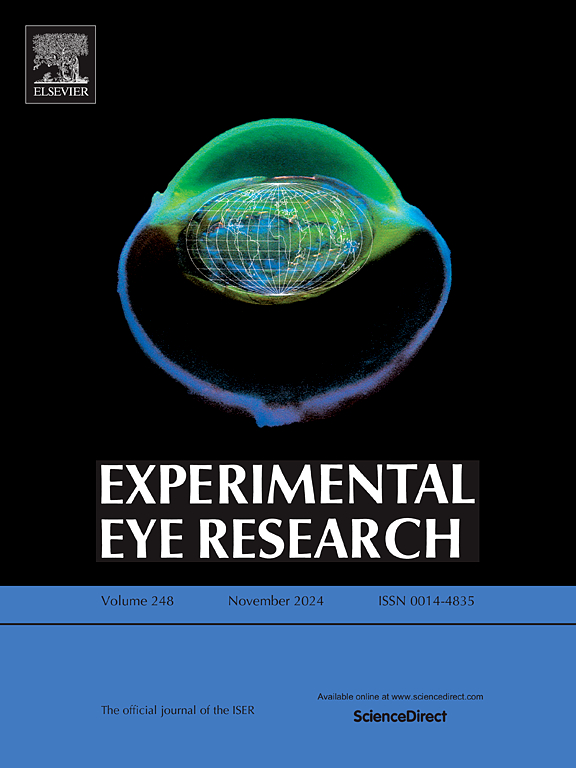用蛋白质组学方法评估视网膜外膜患者玻璃体样本中的蛋白质概况
IF 3
2区 医学
Q1 OPHTHALMOLOGY
引用次数: 0
摘要
本研究旨在利用蛋白质组学分析来描述特发性视网膜外膜(iERM)的特征,从而改进诊断和治疗策略。在一项前瞻性病例对照临床试验中,研究人员在手术过程中采集了12名特发性视网膜外膜(iERM)患者的玻璃体液(VF),并通过基于2DE的MALDI TOF-TOF MS/MS进行了分析。为了研究鉴定出的蛋白质之间的生物学关系并确定相关的细胞通路,进行了 PANTHER 和 STRING 分析。共鉴定出 148 个蛋白质,包括 24 个 iERM 独有的蛋白质。按生物学过程对蛋白质进行分组后发现,大多数蛋白质参与了细胞粘附(6 个)、蛋白水解(10 个)和补体激活(8 个)。与对照组相比,iERM VF中有12种蛋白质上调,12种下调,其中表达不同的蛋白质与炎症密切相关。蛋白质组分析强调补体和炎症蛋白是 iERM 的潜在生物标记物或治疗靶点。鉴于炎症和纤维化在 iERM 中起着关键作用,进一步研究这些差异蛋白具有重要的临床意义。尽管招募合适的患者是一项挑战,但我们相信这项研究的结果为未来的研究奠定了宝贵的基础。本文章由计算机程序翻译,如有差异,请以英文原文为准。
Assessment of protein profile in vitreous samples of patients with epiretinal membrane by proteomic approaches
This study aims to characterize idiopathic epiretinal membrane (iERM) using proteomic analysis to enhance diagnosis and treatment strategies. In a prospective case-control clinical trial, vitreous fluids (VF) from twelve iERM patients were collected during surgery and analyzed by 2DE-based MALDI TOF-TOF MS/MS. PANTHER and STRING analyses were performed to investigate the biological relationships between the identified proteins and to determine relevant cellular pathways. A total of 148 proteins were identified, including 24 that were unique to iERM. Grouping the proteins by biological processes revealed that most were involved in cell adhesion (n = 6), proteolysis (n = 10), and complement activation (n = 8). Compared to control VF, 12 proteins were upregulated and 12 downregulated in iERM VF, with the differentially expressed proteins strongly associated with inflammation. Proteomic analysis highlighted complement and inflammatory proteins as potential biomarkers or therapeutic targets for iERM. Given that inflammation and fibrosis play critical roles in iERM, further investigation into these differential proteins holds significant clinical relevance. Despite the challenge of recruiting suitable patients, we believe the results of this study provide a valuable foundation for future research.
求助全文
通过发布文献求助,成功后即可免费获取论文全文。
去求助
来源期刊

Experimental eye research
医学-眼科学
CiteScore
6.80
自引率
5.90%
发文量
323
审稿时长
66 days
期刊介绍:
The primary goal of Experimental Eye Research is to publish original research papers on all aspects of experimental biology of the eye and ocular tissues that seek to define the mechanisms of normal function and/or disease. Studies of ocular tissues that encompass the disciplines of cell biology, developmental biology, genetics, molecular biology, physiology, biochemistry, biophysics, immunology or microbiology are most welcomed. Manuscripts that are purely clinical or in a surgical area of ophthalmology are not appropriate for submission to Experimental Eye Research and if received will be returned without review.
 求助内容:
求助内容: 应助结果提醒方式:
应助结果提醒方式:


